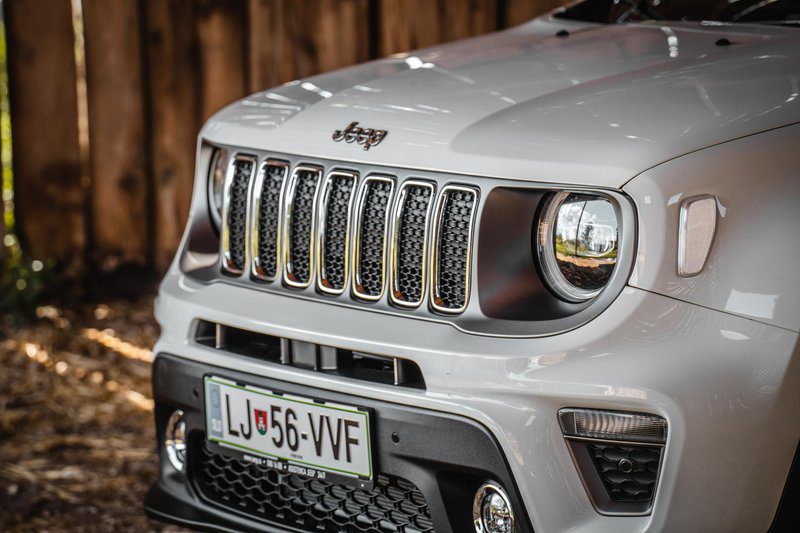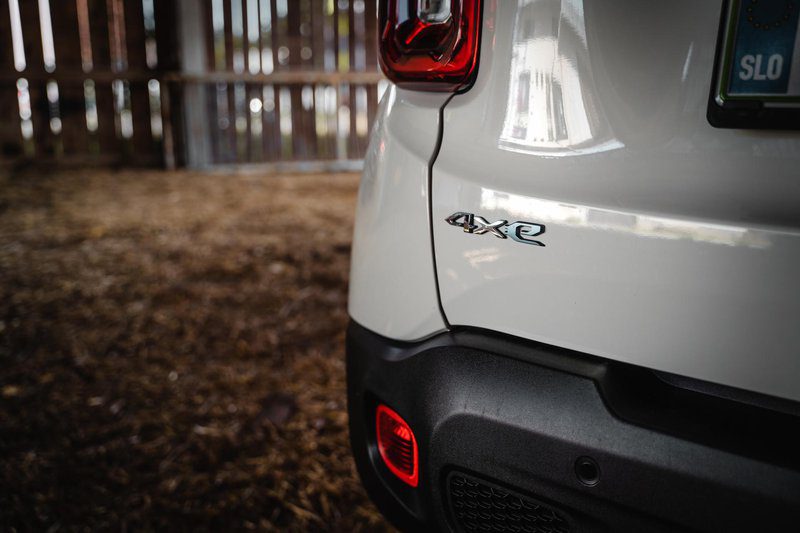
Short test: Jeep Renegade 1,3 GSE PHEV eAWD AUT 240 S (2021) // Who would have led an ancestor
The Jeep brand boasts a history as rich as few. The spirit of the ancestors, of course, lives on in their new models, of course updated with new technologies - now also with such fashionable electricity. The Renegade plug-in hybrid turned out to be both good and less good solutions.

Andraj Keijar
The Renegade is primarily aimed at drivers who do not necessarily need a (too) large car, although the passenger cabin is extremely comfortable and spacious, also due to its angularity, which allows for better use of space, and a lot tighter in the trunk. There are only 330 liters of space, which is a lot, but not a lot.... However, it is also true that, due to the hybrid drive, this is a machine that is perfect for someone and more or less pointless for those who do not have many options to charge the battery locally.
The chassis is excellent as it is soft enough to absorb all the bumps and bumps in the road shafts, which is really not the case in Slovenia. But at the same time, it also boasts a respectable position on the road, so the driver can trust him. But only when he is fully accustomed to the feeling of too smooth movement on the steering wheel. I trusted him, and I was more and more impressed by the comfort and the fact that those who build poorly and service Slovenian roads even worse found a real competitor in Renegade.

At 4,24 meters long, they squeezed in most of the car, giving it a more squared-off shape than would be expected for a Jeep. With it, he will not necessarily win beauty contests, but it gives him character and visibility. The same can be said for the interior. However, everything in it is a little more scattered. Some of the switches and gauges on the center console are tucked away from sight somewhere in the back of the dashboard. It wasn't easy for me to find the optimal driving position, and even in my right knee there was a slightly unfortunate dashboard that definitely didn't contribute to comfort. Fortunately, at least the rest worked as it should, and the car is comfortable, logical and easy enough to operate.
The same can be said for the heart of this car. The plug-in hybrid drive system powers all four wheels and has several work programs for this purpose, but we also know this from, say, Compass.... Thus, the transmission consists of a 1,3-liter gasoline engine with 132 kilowatts (180 "horsepower") and 44 kilowatts (60 "horsepower") a pair of powerful electric motors.... In practice, this combination works very well, the two drives complement each other perfectly and allow the driver to drive the car quite decisively, as a single electric motor also takes care of the rear-wheel drive when needed.

It becomes especially lively when accelerating in electric mode. That's when the Renegade becomes incredibly cheerful, the first few meters are a real joy.... In electric mode, you can travel up to 60 kilometers on a single charge (of course, in urban conditions) if you're softer. However, switching from one disk to another is inaudible and imperceptible; The fact that there is also a gasoline engine somewhere under the hood, the driver and passengers will know when you ask him for something else. At this time, a rather coarse noise is heard, but almost nothing happens on the road.
Of course, this kind of drive comes at a price. First, it's a 37-liter fuel tank, which means you might be a little more frequent at gas stations if you don't charge your battery regularly. But also because the fuel consumption on the test was far from what was promised at the factory. In the test, I managed to calm him down with an (almost) discharged battery at just under seven liters per 100 kilometers. Of course, this happens when the battery is indeed nearly empty and still has a percentage or two of electricity in it. At that time, most of the drive relies only on the gasoline engine and therefore fuel consumption increases. By continuously charging the battery, the consumption of about four liters of gasoline becomes more realistic.

And one more thing: if you can charge your car regularly and can really drive a lot on electricity, such a car is a good choice. If not, and if you mostly drive petrol, then the Renegade with its 1,3 kilowatts (110 "horsepower") 150-liter automatic engine is almost half the price and a cheaper solution.
Jeep Renegade 1,3 GSE PHEV eAWD AUT 240 S (2021 дод)
Basic data
| Sales: | Avto Triglav doo |
|---|---|
| Test model cost: | 44.011 € |
| Base model price with discounts: | 40.990 € |
| Test model price discount: | 40.511 € |
| Power: | 132kW (180 KM) |
| Acceleration (0-100 km / h): | 7,1 with |
| Maximum speed: | 199 km / h |
| Mixed flow ECE: | 2,3l / 100km |
Costs (per year)
Technical information
| engine: | Engine: 4-cylinder - 4-stroke - in-line - petrol - displacement 1.332 cm3 - maximum power 132 kW (180 hp) at 5.750 - maximum torque 270 Nm at 1.850 rpm. Electric motor: maximum power 44 kW - maximum torque 250 Nm. System: Maximum power 176 kW (240 PS), maximum torque 529 Nm. |
|---|---|
| Battery: | Li-ion, 11,4 kWh |
| Energy transfer: | engines are driven by all four wheels - 6-speed automatic transmission. |
| Capacity: | top speed 199 km/h - acceleration 0-100 km/h 7,1 s - top speed electric 130 km/h - average combined fuel consumption (WLTP) 2,3 l/100 km, CO2 emissions 52 g/km – electric range (WLTP) 42 km, battery charging time 1,4 h (3,7 kW / 16 A / 230 V) |
| Mass: | empty vehicle 1.770 kg - permissible gross weight 2.315 kg. |
| External dimensions: | length 4.236 mm - width 1.805 mm - height 1.692 mm - wheelbase 2.570 mm |
| Box: | 330-1.277 liters |

